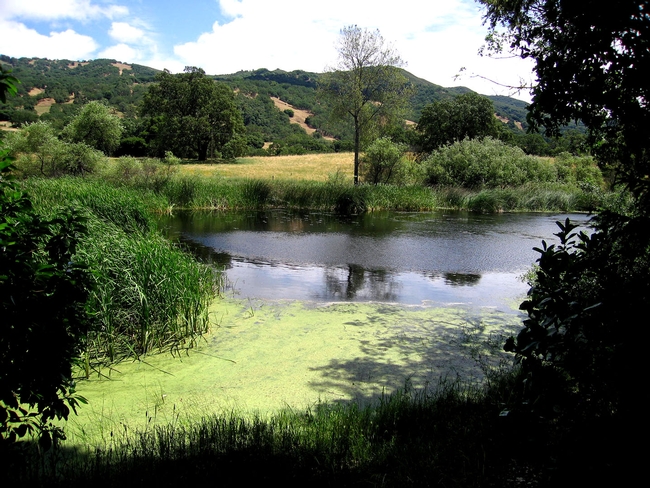The UC Hopland Research & Extension Center has three very old natural "sag" ponds, geologically formed as a result of seismic activity which is common throughout California. A sag pond is a body of water which forms as water collects in the lowest portions of a depression that forms between two strands of an active strike-slip fault. Basically, as the land mass "stretches" because of seismic activity over time, the land between them sinks, thus forming such ponds.
The Maacama Fault runs directly underneath this region.
One of the "Lake Biological Area" ponds holds a permanent body of water (see photo), one is semi-permanent holding water throughout the summer in all but the most extreme drought years, and one is a "vernal pool" filling each winter but drying each summer.
Once home to Northern California Red-legged Frogs, as known from 1950s collected specimens, the introduction of non-native large-mouth bass, green sunfish, and bluegill along with the invasion by bullfrogs led to the extermination of this population of native frog species. The ponds, however, are home to many unique plants, birds, animals, amphibians and invertebrates of the local area due to the long-standing, permanent wetlands habitat.
